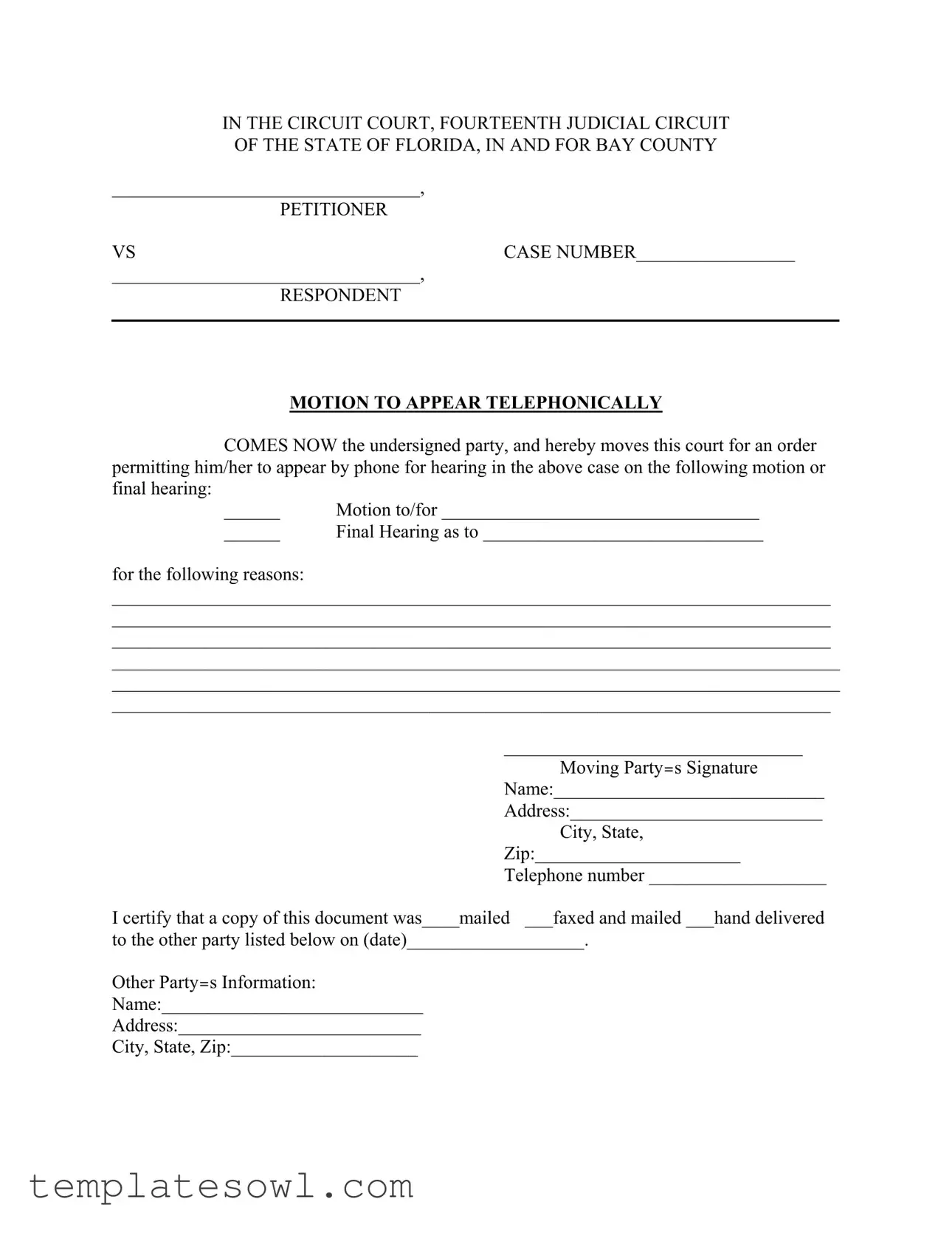IN THE CIRCUIT COURT, FOURTEENTH JUDICIAL CIRCUIT
OF THE STATE OF FLORIDA, IN AND FOR BAY COUNTY
_________________________________,
PETITIONER |
|
VS |
CASE NUMBER_________________ |
_________________________________, |
|
RESPONDENT |
|
|
|
MOTION TO APPEAR TELEPHONICALLY
COMES NOW the undersigned party, and hereby moves this court for an order permitting him/her to appear by phone for hearing in the above case on the following motion or final hearing:
______ |
Motion to/for __________________________________ |
______ |
Final Hearing as to ______________________________ |
for the following reasons:
_____________________________________________________________________________
_____________________________________________________________________________
_____________________________________________________________________________
______________________________________________________________________________
______________________________________________________________________________
_____________________________________________________________________________
________________________________
Moving Party=s Signature
Name:_____________________________
Address:___________________________
City, State, Zip:______________________
Telephone number ___________________
I certify that a copy of this document was____mailed ___faxed and mailed ___hand delivered
to the other party listed below on (date)___________________.
Other Party=s Information:
Name:____________________________
Address:__________________________
City, State, Zip:____________________
